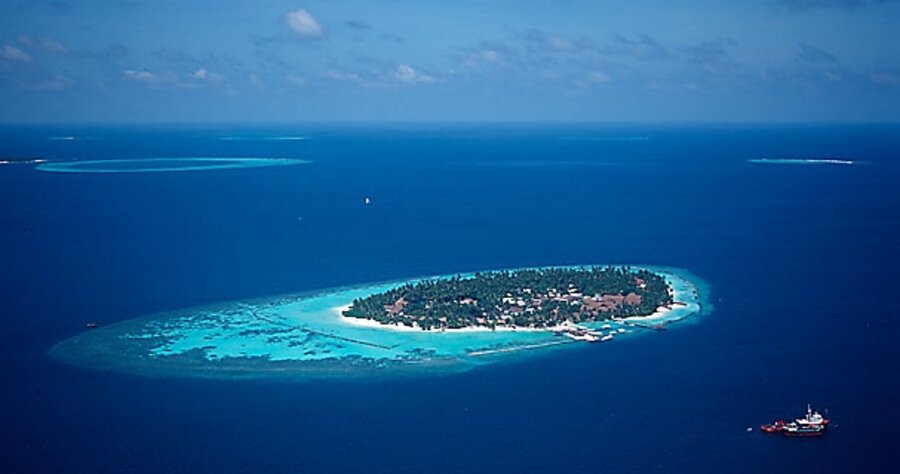Faced with rising sea levels, the Maldives seek new homeland
Many scientists believe that, given enough political will, humanity can still manage to avoid catastrophic climate change. But the president-elect of the Maldives isn't taking any chances.
Mohamed Nasheed, who was sworn in Tuesday as the Maldives' first democratically elected president, says that rising sea levels threaten to inundate the tiny Indian Ocean island nation. He has announced plans for a fund to buy land elsewhere in the region, where the country's population, estimated to be about 386,000, could rebuild their lives.
In an interview with the Guardian, Mr. Nasheed said that he is preparing for the worst:
Nasheed said that he is looking at land in India and Sri Lanka, because they have climates, cultures, and cuisines similar to that of the Maldives. He is also considering Australia, which has land to spare.
To pay for it, Nasheed says his government will set up a sovereign wealth fund, with revenues coming from tourism, the country's most lucrative industry. The Guardian notes that 467,154 people visited the country, which is famed for its placid beaches, in 2006.
According to the CIA World Factbook, some 80 percent of the 1,192 coral islets that make up the Maldives are one meter or less above sea level, making it the world's lowest country. The UN climate panel predicts that, unless greenhouse emissions are curbed, sea levels could rise by 25 to 58 centimeters by the end of the century. More recent studies, such as this one published in the journal Science, sharply increase the projected sea level rise, to as high as two meters.
If this happens, the Maldives would be uninhabitable. But Maldivians wouldn't be the first population displaced by global warming.
That distinction probably belongs to the half million residents of Bangladesh's Bhola Island whose homes were swallowed in 1995 by rising sea levels. In 2005, the 1,600 residents of Papua New Guinea's Carteret Islands began evacuation, as the advancing sea contunued to destroy gardens, sink homes, and contaminate freshwater supplies. Also that year, 100 residents of Vanuatu's island of Tegua had to be evacuated as their homes became permanently flooded.
Other low-lying Pacific islands that could disappear in this century include those in Tuvalu, Kiribati, the Marshall Islands, and Fiji.
Were these countries to be evacuated, the legal status of the global warming diaspora would be unclear. The same goes for that of a submerged country's sovereignty. No nation in recorded history has peacefully relocated its entire population and remained intact, and, as National Geographic pointed out in 2005, environmental refugees are not recognized by international law.





